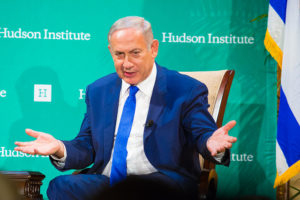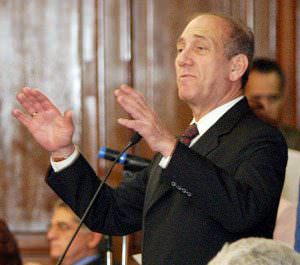The Lessons of Violence
The former New York Times Middle East bureau chief warns that the actions that led to the humanitarian crisis in Gaza will not bring peace to Israel but will instead create a new generation of Palestinian militants.
The Gaza Strip is rapidly becoming one of the worst humanitarian disasters in the world. Israel has cordoned off the entire area, home to some 1.4 million Palestinians, blocking commercial goods, food, fuel and even humanitarian aid. At least 36 people have been killed in Israeli strikes since Tuesday and many more wounded. Hamas, which took control of Gaza in June, has launched about 200 rockets into southern Israel in the same period in retaliation, injuring more than 10 people. Israel announced the draconian closure and collective punishment Thursday in order to halt the rocket attacks, begun on Tuesday, when 18 Palestinians, including the son of a Hamas leader, were killed by Israeli forces.
This is not another typical spat between Israelis and Palestinians. This is the final, collective strangulation of the Palestinians in Gaza. The decision to block shipments of food by the United Nations Relief and Works Agency means that two-thirds of the Palestinians who rely on relief aid will no longer be able to eat when U.N. stockpiles in Gaza run out. Reports from inside Gaza speak of gasoline stations out of fuel, hospitals that lack basic medicine and a shortage of clean water. Whole neighborhoods were plunged into darkness when Israel cut off its supply of fuel to Gaza’s only power plant. The level of malnutrition in Gaza is now equal to that in the poorest sub-Saharan nations.
Israeli Prime Minister Ehud Olmert uses words like war to describe the fight to subdue and control Gaza. But it is not war. The Palestinians have little more than old pipes fashioned into primitive rocket launchers, AK-47s and human bombs with which to counter the assault by one of the best-equipped militaries in the world. Palestinian resistance is largely symbolic. The rocket attacks are paltry, especially when pitted against Israeli jet fighters, attack helicopters, unmanned drones and the mechanized units that make regular incursions into Gaza. A total of 12 Israelis have been killed over the past six years in rocket attacks. Suicide bombings, which once rocked Jerusalem and Tel Aviv, have diminished, and the last one inside Israel that was claimed by Hamas took place in 2005. Since the current uprising began in September 2000, 1,033 Israelis and 4,437 Palestinians have died in the violence, according to the Israeli human rights organization B’Tselem. B’Tselem noted in a December 2007 report that the dead included 119 Israeli children and 971 Palestinian children.
The failure on the part of Israel to grasp that this kind of brutal force is deeply counterproductive is perhaps understandable given the demonization of Arabs, and especially Palestinians, in Israeli society. The failure of Washington to intervene — especially after President Bush’s hollow words about peace days before the new fighting began — is baffling. Collective abuse is the most potent recruiting tool in the hands of radicals, as we saw after the indiscriminate Israeli bombing of Lebanon and the American occupation of Iraq. The death of innocents and collective humiliation are used to justify callous acts of indiscriminate violence and revenge. It is how our own radicals, in the wake of 9/11, lured us into the wars in Afghanistan and Iraq.
Israel has been attempting to isolate and punish Gaza since June when Hamas took control after days of street fighting against its political rival Fatah. Palestinian Authority President Mahmoud Abbas, a Fatah leader, dissolved the unity government. His party, ousted from Gaza, has been displaced to the Israeli-controlled West Bank. The isolation of Hamas has been accompanied by a delicate dance between Israel and Fatah. Israel hopes to turn Fatah into a Vichy-style government to administer the Palestinian territories on its behalf, a move that has sapped support for Fatah among Palestinians and across the Arab world. Hamas’ stature rises with each act of resistance.
I knew the Hamas leader Dr. Abdel Aziz al-Rantissi, who was assassinated by Israel in April of 2004. Rantissi took over Hamas after its founder, Sheik Ahmed Yassin, was assassinated by the Israelis in March of that year. Rantissi was born in what is now Israel and driven from his home in 1948 during the war that established the Jewish state. He, along with more than 700,000 other Palestinian refugees, grew up in squalid camps. As a small boy he watched the Israeli army enter and occupy the camp of Khan Younis in 1956 when Israel invaded Gaza. The Israeli soldiers lined up dozens of men and boys, including some of Rantissi’s relatives, and executed them. The memory of the executions marked his life. It fed his lifelong refusal to trust Israel and stoked the rage and collective humiliation that drove him into the arms of the Muslim Brotherhood and later Hamas. He was not alone. Several of those who founded the most militant Palestinian organizations witnessed the executions in Gaza carried out by Israel in 1956 that left hundreds dead.
Rantissi was a militant. But he was also brilliant. He studied pediatric medicine and genetics at Egypt’s Alexandria University and graduated first in his class. He was articulate and well read and never used in my presence the crude, racist taunts attributed to him by his Israeli enemies. He reminded me that Hamas did not target Israeli civilians until Feb. 25, 1994, when Dr. Baruch Goldstein, dressed in his Israeli army uniform, entered a room in the Cave of the Patriarchs, which served as a mosque, and opened fire on Palestinian worshipers. Goldstein killed 29 unarmed people and wounded 150. Goldstein was rushed by the survivors and beaten to death.
“When Israel stops killing Palestinian civilians we will stop killing Israeli civilians,” he told me. “Look at the numbers. It is we who suffer most. But it is only by striking back, by making Israel feel what we feel, that we will have any hope of protecting our people.”
The drive to remove Hamas from power will not be accomplished by force. Force and collective punishment create more Rantissis. They create more outrage, more generations of embittered young men and women who will dedicate their lives to avenging the humiliation, perhaps years later, they endured and witnessed as children. The assault on Gaza, far from shortening the clash between the Israelis and Palestinians, ensures that it will continue for generations. If Israel keeps up this attempt to physically subdue Gaza we will see Hamas-directed suicide bombings begin again. This is what resistance groups that do not have tanks, jets, heavy artillery and attack helicopters do when they want to fight back and create maximum terror. Israeli hawks such as Ephraim Halevy (a former head of Mossad), Giora Eiland (who was national security adviser to Ariel Sharon) and Shaul Mofaz (a former defense minister) are all calling for some form of dialogue with Hamas. They get it. But without American pressure Prime Minister Olmert will not bend.
Israel, despite its airstrikes and bloody incursions, has been unable to halt the rocket fire from Gaza or free Cpl. Gilad Shalit, an Israeli soldier captured in the summer of 2006. Continued collective abuse and starvation will not break Hamas, which was formed, in large part, in response to Israel’s misguided policies and mounting repression. There will, in fact, never be Israeli-Palestinian stability or a viable peace accord now without Hamas’ agreement. And the refusal of the Bush administration to intercede, to move Israel toward the only solution that can assure mutual stability, is tragic not only for the Palestinians but ultimately Israel.
And so it goes on. The cycle of violence that began decades ago, that turned a young Palestinian refugee with promise and talent into a militant and finally a martyr, is turning small boys today into new versions of what went before them. Olmert, Bush’s vaunted partner for peace, has vowed to strike at Palestinian militants “without compromise, without concessions and without mercy,” proof that he and the rest of his government have learned nothing. It is also proof that we, as the only country with the power to intervene, have become accessories to murder.
Chris Hedges, the former Middle East bureau chief for The New York Times and author most recently of “American Fascists: The Christian Right and the War on America,” can be found every other Monday on Truthdig.
Your support matters…Independent journalism is under threat and overshadowed by heavily funded mainstream media.
You can help level the playing field. Become a member.
Your tax-deductible contribution keeps us digging beneath the headlines to give you thought-provoking, investigative reporting and analysis that unearths what's really happening- without compromise.
Give today to support our courageous, independent journalists.





You need to be a supporter to comment.
There are currently no responses to this article.
Be the first to respond.